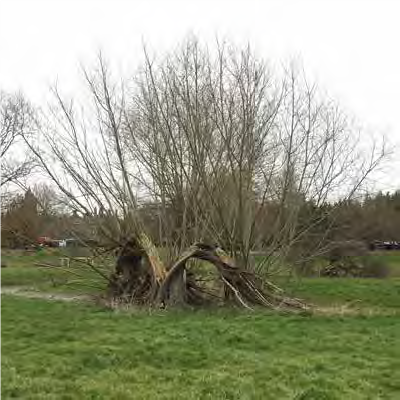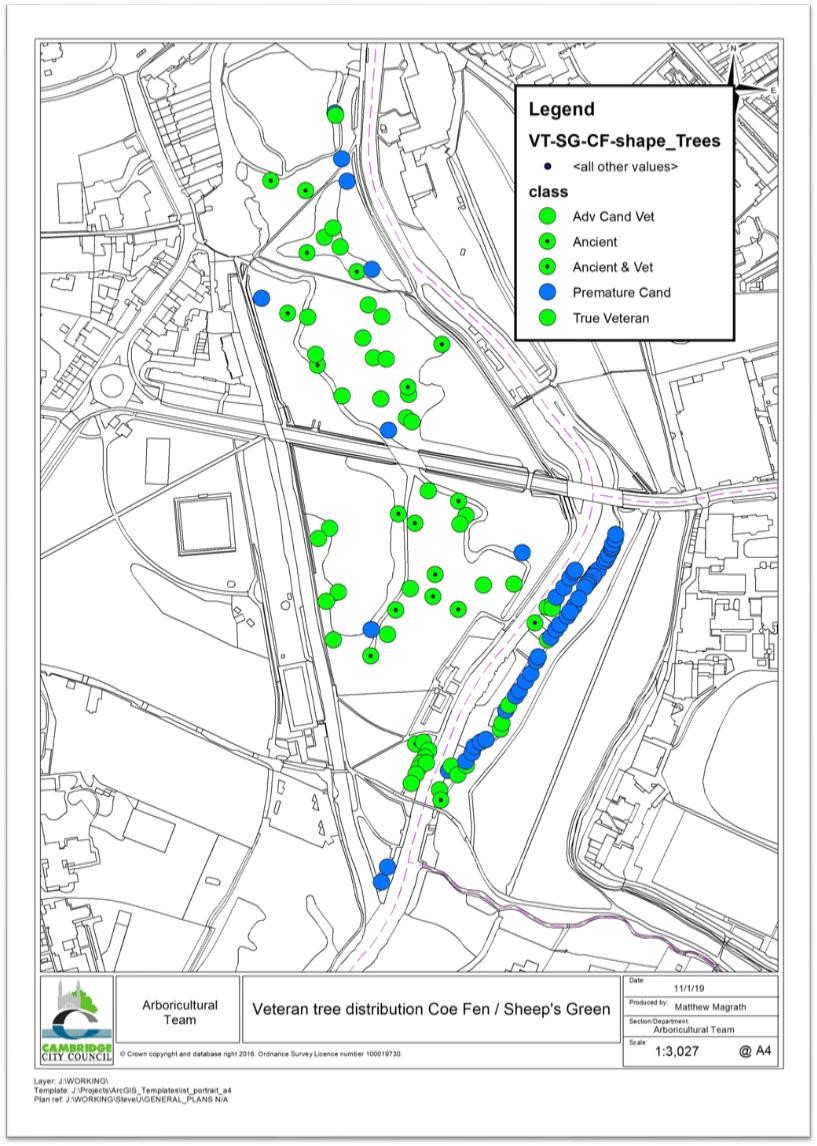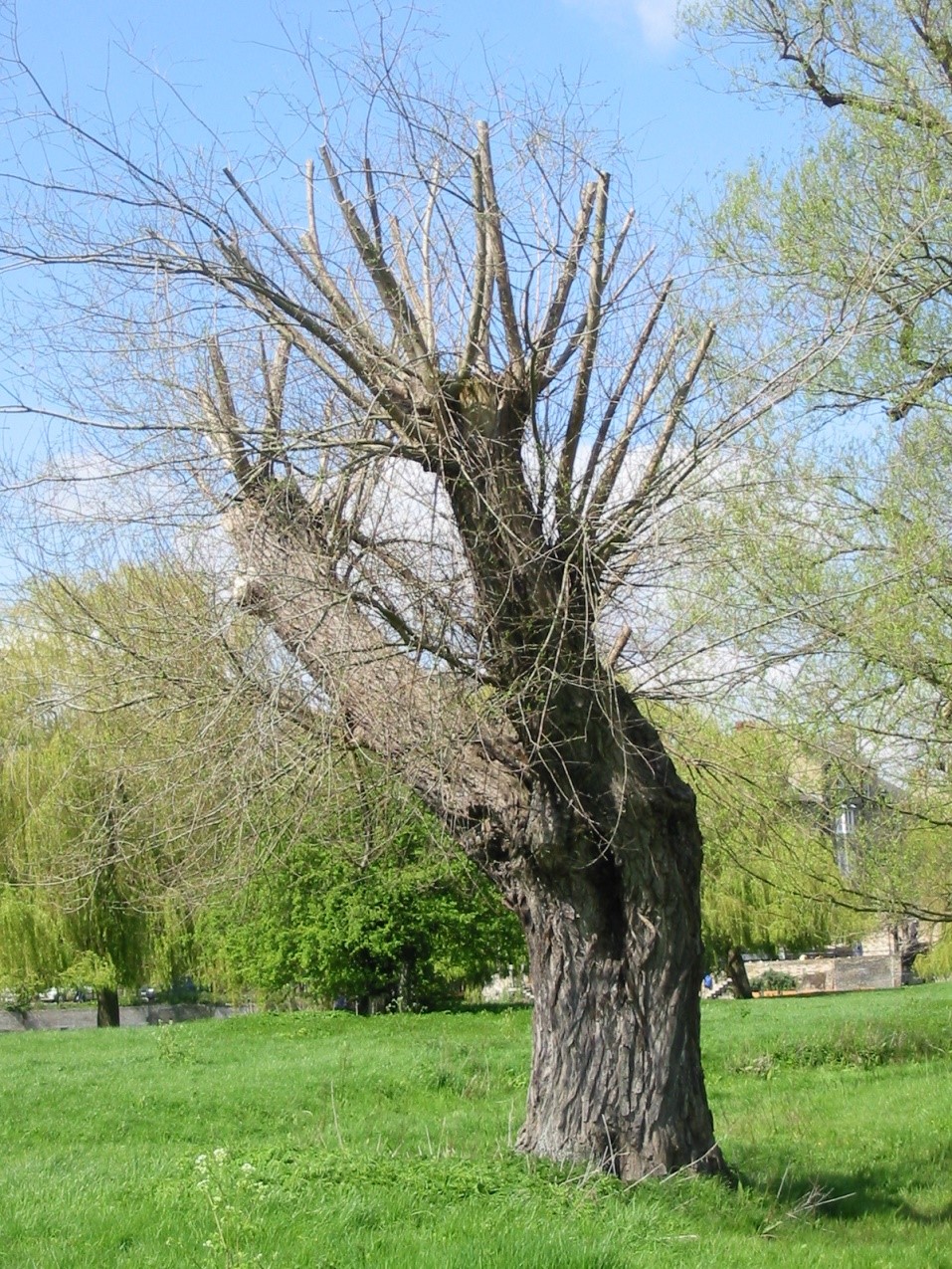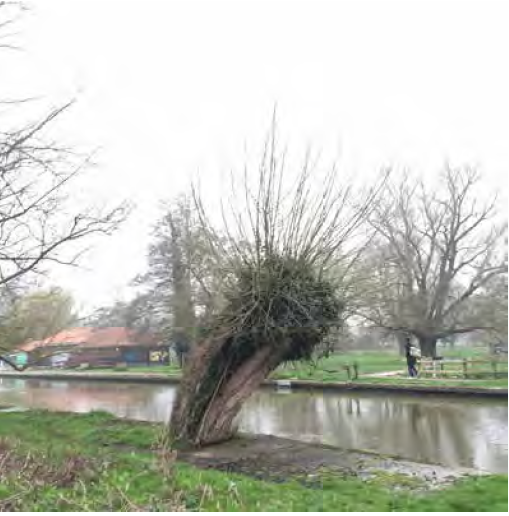The '2018 Veteran and Ancient Survey – Sheep’s Green and Coe Fen, Cambridge' set outs specialised management techniques we will apply to the 119 veteran trees on Sheep’s Green and Coe Fen in order to enhance and prolong their veteran tree characteristics.
The survey addresses the following key threats:
- Structural failure of the veteran trees due to extensive decay and wind loading
- Competition due to adjacent vegetation which reduces their viability
- Cattle poaching and soil compaction which reduces their vitality

Example of a collapsed Willow pollard.
Sheep’s Green and Coe Fen are situated in the west of the city and are designated local nature reserves. Both were traditional grazing sites for sheep and also cows.
Being seasonally flooded ground, this historic landscape is constantly changing. The site is home to one of the highest concentration of veteran willow trees in Cambridge.
119 trees have been identified as veteran and consist largely of old and decaying lapsed willow pollards, but there are also a small number of trees that haven’t been pollarded that include willow, hawthorn and poplar too.
The total tree population on Sheep’s Green and Coe Fen is 390 trees.
The survey report identified 50 ancient and or veteran trees and 17 advanced candidate veteran trees: around 67 in total. We have identified a further 53 premature candidate veteran willow trees which have not been included in the survey report but will also be subject to the management techniques set out in the survey report.
Veteran trees here are of interest biologically because of their age, size or condition. They have been identified as having 4 or more veteran tree characteristics (for example rot holes, dead wood, hollowing, scars and tears which provide habitat to other flora and fauna).
By stabilising the existing veteran tree population we can ensure habitat continuity by planning for successive generations of veteran trees. Both the premature and advanced candidate veteran trees look similar to true veteran, but exhibit fewer than 4 characteristics and should be considered transitioning to true veteran status. They can be considered as the next generation of veteran trees and it is proposed to manage them as veteran to stabilise. Ancient trees have been classified by their size, and are old for species.

Management techniques proposed
To reduce the impact of the key threats on the veteran tree population the following techniques will be applied where and when appropriate:
- Staged restorative crown reductions – to increase stability of the trees to return the lapsed pollards to pollard status.
- Critical reparative crown reduction – to be applied where stability appears under immediate threat of collapse.
- Special restorative techniques – which include more minor reductions to increase internal shoot growth in the crown of the tree to increase the success rate of later restorative reductions
- Decompaction – to reduce stress on the veteran trees rooting systems
- Competitive vegetation and ivy management – to reduce shading of the inner canopy to promote internal shoot growth.


Example of staged restorative reduction – high pollard, and example of restorative works back to the original bolling – low pollard.
You can download a copy of the full survey here [PDF, 5MB], and also download a copy of the Veteran Trees in Cambridge 2004 booklet [PDF, 3MB].


